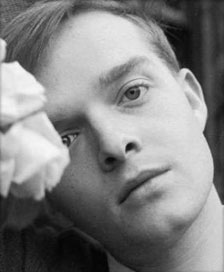Then the seventh, “La Côte Basque.” I went on in this manner, writing different chapters out of sequence. I was able to do this only because the plot—or rather plots—was true, and all the characters were real: it wasn’t difficult to keep it all in mind, for I hadn’t invented anything. And yet Answered Prayers is not intended as any ordinary roman à clef, a form where facts are disguised as fiction. My intentions are the reverse: to remove disguises, not manufacture them.
In 1975 and 1976 I published four chapters of the book in Esquire magazine. This aroused anger in certain circles, where it was felt I was betraying confidences, mistreating friends and/or foes. I don’t intend to discuss this; the issue involves social politics, not artistic merit. I will say only that all a writer has to work with is the material he has gathered as the result of his own endeavor and observations, and he cannot be denied the right to use it. Condemn, but not deny.
However, I did stop working on Answered Prayers in September 1977, a fact that had nothing to do with any public reaction to those parts of the book already published. The halt happened because I was in a helluva lot of trouble: I was suffering a creative crisis and a personal one at the same time. As the latter was unrelated, or very little related, to the former, it is only necessary to remark on the creative chaos.
Now, torment though it was, I’m glad it happened; after all, it altered my entire comprehension of writing, my attitude toward art and life and the balance between the two, and my understanding of the difference between what is true and what is really true.
To begin with, I think most writers, even the best, overwrite. I prefer to underwrite. Simple, clear as a country creek. But I felt my writing was becoming too dense, that I was taking three pages to arrive at effects I ought to be able to achieve in a single paragraph. Again and again I read all that I had written of Answered Prayers, and I began to have doubts—not about the material or my approach, but about the texture of the writing itself.
I reread In Cold Blood and had the same reaction: there were too many areas where I was not writing as well as I could, where I was not delivering the total potential. Slowly, but with accelerating alarm, I read every word I’d ever published, and decided that never, not once in my writing life, had I completely exploded all the energy and aesthetic excitements that material contained. Even when it was good, I could see that I was never working with more than half, sometimes only a third, of the powers at my command. Why?
The answer, revealed to me after months of meditation, was simple but not very satisfying. Certainly it did nothing to lessen my depression; indeed, it thickened it. For the answer created an apparently unsolvable problem, and if I couldn’t solve it, I might as well quit writing. The problem was: how can a writer successfully combine within a single form—say the short story—all he knows about every other form of writing?
For this was why my work was often insufficiently illuminated; the voltage was there, but by restricting myself to the techniques of whatever form I was working in, I was not using everything I knew about writing—all I’d learned from film scripts, plays, reportage, poetry, the short story, novellas, the novel. A writer ought to have all his colors, all his abilities available on the same palette for mingling (and, in suitable instances, simultaneous application). But how?
I returned to Answered Prayers. I removed one chapter and rewrote two others. An improvement, definitely an improvement. But the truth was, I had to go back to kindergarten. Here I was—off again on one of those grim gambles! But I was excited; I felt an invisible sun shining on me. Still, my first experiments were awkward. I truly felt like a child with a box of crayons.
From a technical point, the greatest difficulty I’d had in writing In Cold Blood was leaving myself completely out of it. Ordinarily, the reporter has to use himself as a character, an eyewitness observer, in order to retain credibility. But I felt that it was essential to the seemingly detached tone of that book that the author should be absent. Actually, in all my reportage, I had tried to keep myself as invisible as possible.
Now, however, I set myself center stage, and reconstructed, in a severe, minimal manner, commonplace conversations with everyday people: the superintendent of my building, a masseur at the gym, an old school friend, my dentist. After writing hundreds of pages of this simpleminded sort of thing, I eventually developed a style. I had found a framework into which I could assimilate everything I knew about writing.
Later, using a modified version of this technique, I wrote a nonfiction short novel (Handcarved Coffins) and a number of short stories. The result is the present volume: Music for Chameleons.
And how has all this affected my other work-in-progress, Answered Prayers? Very considerably. Meanwhile, I’m here alone in my dark madness, all by myself with my deck of cards—and, of course, the whip God gave me.
1980
The End
